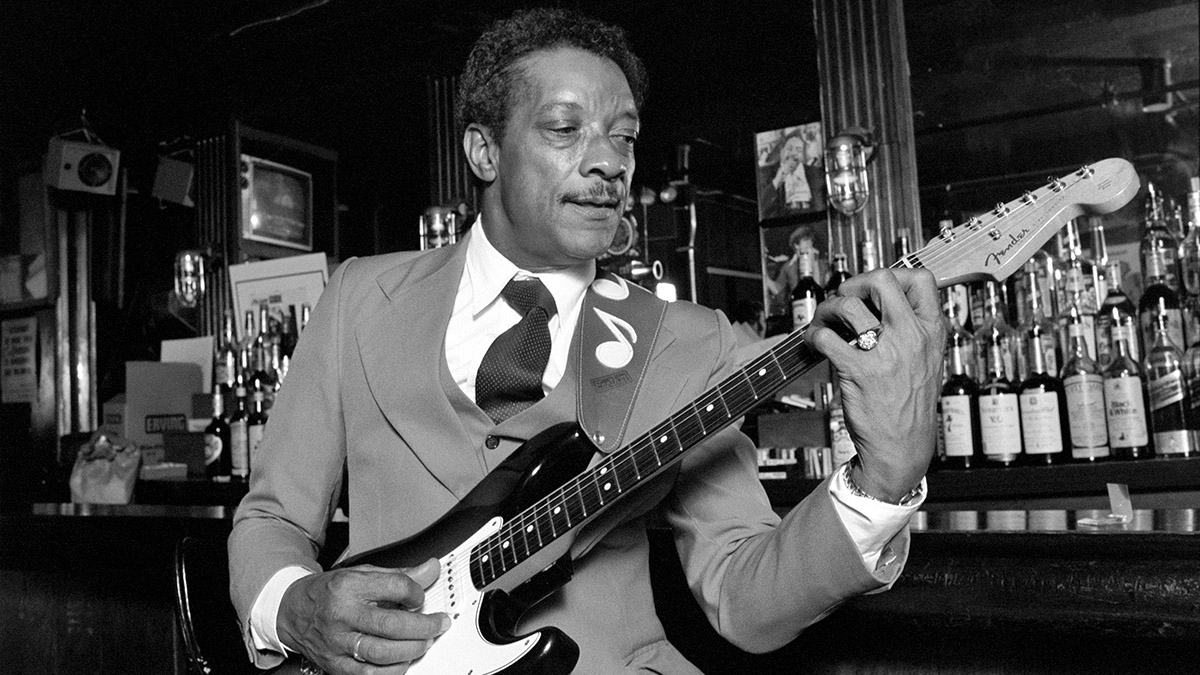Learn the guitar stylings of the pioneering Hubert Sumlin – essential learning for any aspiring blues player
The six-string lieutenant to the immortal Howlin’ Wolf and Muddy Waters, Sumlin is one of the authors of the electric blues sound, and he was no slouch with country styles, either

A blues guitar legend with a legacy like no other, Hubert Sumlin began his career rubbing shoulders with the original heavyweights of both country and electric blues. He was there at the beginning, in the room, so to speak, when the blues began. He went on to influence generations of guitarists that followed. In short, Hubert is the real deal.
Sumlin’s career spanned six decades and included an impressive output as both solo artist and sideman. However, he is perhaps best known for his partnership with Howlin’ Wolf (as well as for a brief stint with Muddy Waters).
Throughout his time with Wolf, Sumlin created a style that would be imitated by countless musicians to follow. He made a huge contribution to the sound of some of the best blues recordings in history, and it is this Chicago blues era on which our studies will focus.
Born in 1931 in Mississippi, Hubert had been influenced by early country blues players as well as artists like John Lee Hooker, who were just beginning to introduce electric guitar into the blues. Hubert took what he liked from these early influences, cherry-picked ideas, licks and tricks, and threw them into the melting pot until he found his own sound.
He states, however, that he really found his true voice on the instrument by deciding one day to ditch his pick and to play exclusively using fingers. This gave a lighter, softer, but more expressive quality to his sound and he was able to turn up the amplifier, allowing his guitar to sing with sustain.
His newer electrified style was more lead-line based than earlier blues, with flashes of notes interjected between vocal phrases. The lines themselves were often Pentatonic based, with Hubert mixing major and minor and also leaning on chord tones.
He would punctuate the music with parts that outlined the harmony, making use of cluster chords that described dominant 7ths and 9ths, while adding melodic interest and hooks.
All the latest guitar news, interviews, lessons, reviews, deals and more, direct to your inbox!
He could also seamlessly blend rhythm and lead – a concept imitated by generations that followed, and highlighting the enormity of his legacy. In fact, many of Sumlin’s riffs and licks are so synonymous with the blues that they are almost cliché – a true testament to his artistic contribution.
Sumlin’s style was electrifying, with sizzling and imaginative solos littered with bends, a rapid vibrato, and slides that ran the length of the neck. While his playing might sound less refined than today’s guitarists, those that criticise players like Sumlin are perhaps missing the point by not placing him in the context of the evolution of guitar playing.
Great masters often reach their heights by standing on the shoulders of giants, as the adage goes. If so, then Hubert Sumlin gave us some pretty broad shoulders on which to place our feet.
Get the tone
Amp Settings: Gain 2, Bass 3, Middle 4, Treble 6, Reverb 4
Hubert’s recordings with Howlin’ Wolf were most likely done on a ’50s Gibson Les Paul. The most important element to his tone though comes from using the fingers of the picking hand. Dial in a bright tone that’s just about breaking up, roll back the guitar volume knob slightly, and brush the strings with your first finger using a fairly light touch. Add reverb for that live edge.
Solo 1. Combining rhythm and lead
This study demonstrates how Hubert would combine chords with lead lines to create a full and satisfying sound. Aim for a softer attack for the chords to balance the volume and allow the lead lines to stand out.
Remember, these studies were both played without a pick, so spend some time familiarising yourself with this style if it’s new to you. The picking strokes in bar 1 apply to the directions of your first finger or thumb unless you’re a die hard plectrum user!
Solo 2. Vocal-like phrasing
This solo shows how Hubert might approach playing over a shuffle groove and demonstrates his melodic, vocal-like phrasing that makes use of plenty of space. The slides in bar 13 are a trick that Hubert would often employ.
Don’t be too concerned about matching the top-of-the-neck pitches perfectly, just aim for as high as you can go. It’s more about the vibe that this move creates. Aim for a relaxed overall feel and milk those string bends for all they’re worth!
David is a guitarist, producer, and educator. He has performed worldwide as a session musician, with artists and bands spanning many musical genres. He draws upon over 20 years of experience in both live performance and studio work, as well as numerous composing credits. As a producer, he's collaborated with artists across genres, including pop, RnB, and neo soul. David holds a master’s in jazz guitar and teaches at BIMM London and the London College of Music. He is also a regular contributor to Guitar Techniques magazine, sharing his love of blues in a monthly column.

